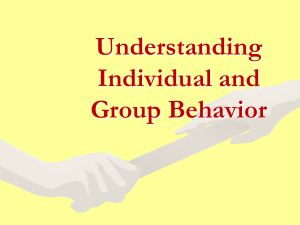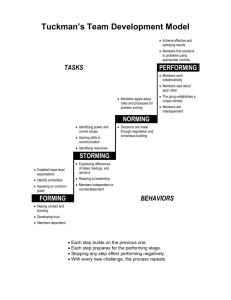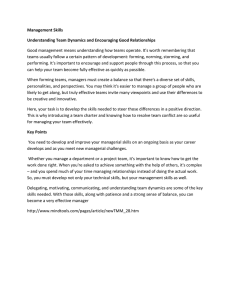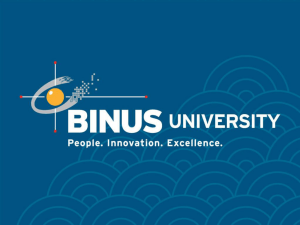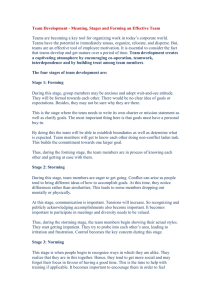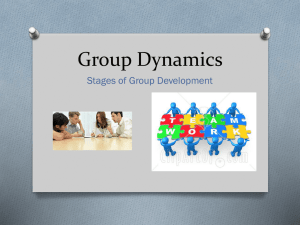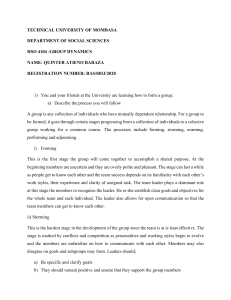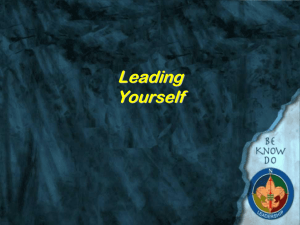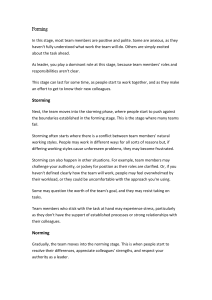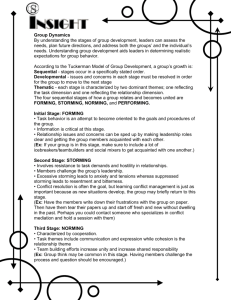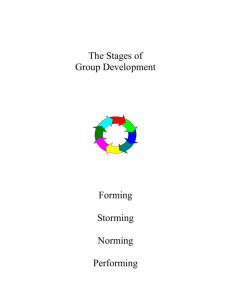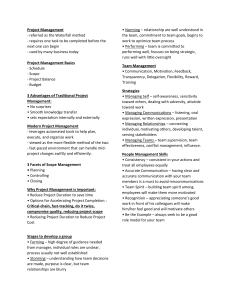What are the benefits of working in teams
advertisement
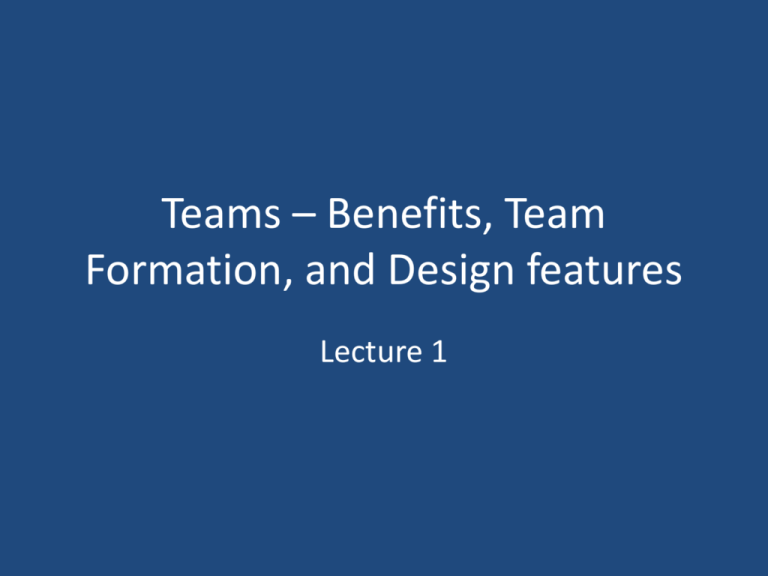
Teams – Benefits, Team Formation, and Design features Lecture 1 What are the benefits of working in teams? 1. Motivation: - People motivated not by money but by recognition. - Teams allow recognition to take place. - (Promote one another’s success) 2. Uniqueness: - Team members must assume responsibility for their actions. - Use individual strengths and abilities. What are the benefits of working in teams? 3) Communication - Members rather than managers take responsibility for their work. - Success of a team depends upon members sharing information with each other. - Team work skills – trust building, relationships, conflict management come from communication. 4) Creativity - Workers both PLAN and DO - Workers are self directed. What are the benefits of working in teams? 5) Fun - If team members have positive relationships they want to help each other. - This often leads to a common desire to achieve team success. - Positive interdependence (can’t succeed without others) What are the benefits of working in teams? General organizational benefits: 1) Reduced costs 2) Reduced workforce 3) Increased profits 4) Closer to customers 5) Fewer layers of management 6) Shorter time to market products 7) Increased employee recognition and motivation. The problem with teams…… Social Loafing How to overcome this problem? Form smaller teams Specialise tasks Measure individual performance Increase job enrichment Select motivated employees How do you form a good team? Stage 1 – Forming Stage 2 – Storming Stage 3 – Norming Stage 4 - Performing Forming - Team members are often holding on to the past. - Some are “in denial” and are not interested in the new proccess. - DENIAL - Team members have different ideas about the project. - Team members are unsure and lack trust. SHOCK - Team members socialize and are polite, and tend to follow the leader. Storming • Team members begin to understand the goals of the team. • Team members discuss the goals and begin to become aware of their role. AWARENESS. • Team members have conflict as they compete for roles. • At this stage Management must make a choice as to how they resolve conflict and communicate. Norming • Team members, through understanding begin to accept the roles of team members ACCEPTANCE They search for common goals and arrive at a common understanding of how those goals are to be achieved. SEARCH - Trust is developed Performing • At this stage the team has agreed upon and accepts: - The Task - The people in their team - The importance of the group, and the trust they have in the group. - The environment in which they work (communication, and position in the group) This means that greater efficiency is achieved. Team Design Features • Task Characteristics • Team Size • Team composition • Team diversity Environmental Design Features Reward systems Communications systems Physical space Organizational structure and leadership
